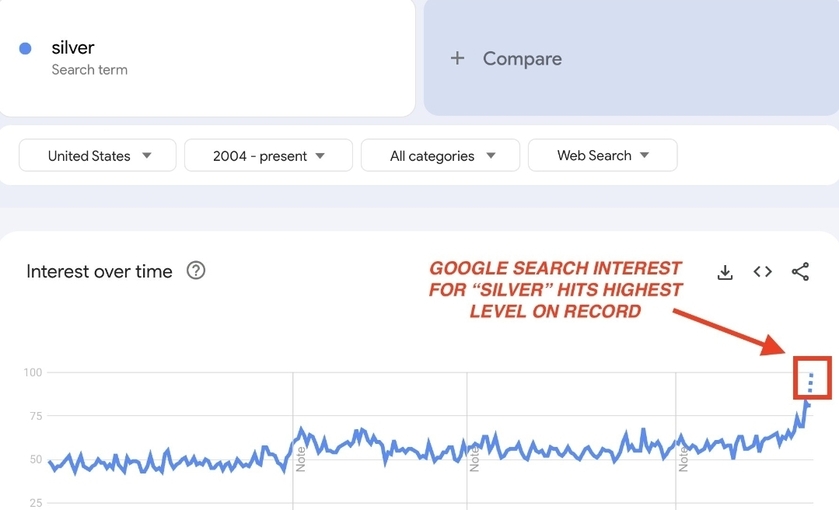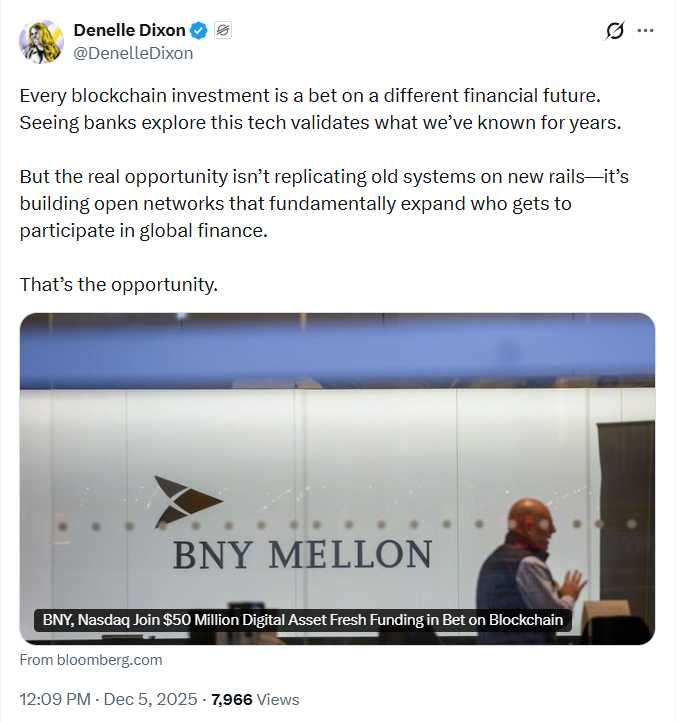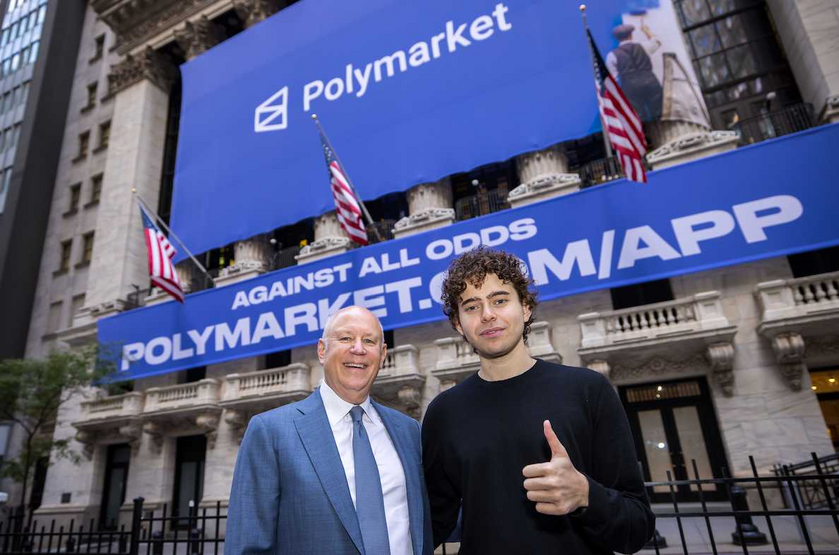💥DeepFreeze on the XRP Ledger – A Comprehensive Examination💥
We need to discuss an amendment that went unnoticed for a long time: DeepFreeze. If you are to lazy to read, just watch the video.
Eminence is already voting for its activation, and I urge my fellow node operators and the community to support it. Let’s look at why.
Welcome to a detailed examination of DeepFreeze, a transformative feature introduced to the XRP Ledger. This amendment is critical for institutional asset management within the ledger ecosystem. In this analysis, we’ll explore the full scope of DeepFreeze—its definition, technical architecture, institutional significance, community development, and long-term implications for XRPL’s role in financial systems. This is a deep dive into a feature that could redefine blockchain compliance and adoption.
What exactly is DeepFreeze?
DeepFreeze is an advanced asset-freezing mechanism integrated into the XRPL, tailored explicitly for fungible tokens issued on the ledger, such as stablecoins and tokenized real-world assets. Unlike XRP, which remains unaffected due to its native status, issued tokens fall under the control of their issuers, who can now leverage DeepFreeze for unprecedented oversight. The standard freeze, a pre-existing feature, restricts an account to only receiving tokens, preventing outward transfers. DeepFreeze, however, escalates this control by prohibiting both sending and receiving, effectively isolating the account from all token-related activities except direct transactions with the issuer.
According to the XRPL documentation, available at http://xrpl.org, DeepFreeze requires the activation of the DeepFreeze amendment—a network-wide upgrade voted on by XRPL validators. It cannot be applied if the issuer has set the NoFreeze flag on their account, a safeguard that permanently disables freezing capabilities for that issuer’s tokens. This layered design ensures flexibility while prioritising compliance, making DeepFreeze a powerful tool for managing token ecosystems in regulated environments.
The significance for Institutions.
The significance of DeepFreeze becomes evident when viewed through an institutional lens. For financial entities—such as central banks issuing central bank digital currencies (CBDCs), or stablecoin providers like
@Ripple’s RLUSD, @SocieteGenerale Forge’s EURCV, and Braza Bank’s BBRL—this feature offers a robust mechanism to enforce regulatory compliance.
Consider a scenario where an account is identified on an international sanctions list, such as those maintained by the U.S. Office of Foreign Assets Control (OFAC @USTreasury). DeepFreeze allows the issuer to immediately halt all token activity for that account, preventing inflows or outflows that could violate anti-money laundering (AML) or know-your-customer (KYC) regulations.
Beyond sanctions, DeepFreeze addresses fraud mitigation. If a stablecoin issuer detects suspicious activity—a hacked account attempting to siphon funds—they can deep-freeze it, stopping the damage while investigations unfold. A http://Dev.to article underscores this utility, noting that the standard freeze’s limitation—allowing incoming transfers—falls short for high-stakes compliance needs. DeepFreeze’s total lockdown fills this gap, enhancing security and trust.
This capability could attract major regulated entities like
@Circle, issuer of USDC, to deploy stablecoins on the XRPL, drawn by its compliance-ready infrastructure. Such adoption would increase token volume, liquidity, and the ledger’s utility for real-world asset tokenization—think real estate or commodities—positioning the XRPL as a leader in institutional blockchain applications.
The Technical Mechanics. (This is a bit technical)
Let’s examine the technical architecture underpinning DeepFreeze, which introduces specific flags to the XRPL’s ledger structure. These flags, detailed in the XRPL documentation, govern trust lines—the bilateral agreements between accounts that enable token holding—and enforce the freeze’s effects. Here’s how they work:
The lsfLowDeepFreeze flag is set on the RippleState object to indicate that the low account in a trust line is deep-frozen. This prevents the high account from sending or receiving the token along that trust line, effectively severing its transactional capability.
Conversely, the lsfHighDeepFreeze flag marks the high account as deep-frozen, blocking the low account from similar activities. This bidirectional control ensures symmetry in enforcement.
In TrustSet transactions, issuers use the tfSetDeepFreeze flag, to apply the DeepFreeze to a specific trust line, activating the lockdown.
To reverse this, the tfClearDeepFreeze flag is invoked in a TrustSet transaction, restoring normal functionality to the trust line.
These flags have sweeping effects across XRPL operations. Payments to a deep-frozen account fail outright, with the transaction engine returning a tecDSTfrozen error if the destination is locked. Rippling—where tokens pass through intermediary accounts—ceases for deep-frozen trust lines, halting multi-hop transfers.
On the decentralized exchange (DEX) and automated market maker (AMM) systems, OfferCreate transactions involving a deep-frozen TakerPays token fail with a tecFROZEN error, and existing offers tied to frozen accounts are implicitly canceled when crossed by new offers, rendering them unfunded.
The GitHub discussion at XRPLF/XRPL-Standards #220 adds further nuance, noting impacts on Check transactions—a feature for deferred payments. CheckCash fails if the recipient’s trust line is deep-frozen, protecting against unauthorized redemption, though CheckCreate and CheckCancel remain unaffected, preserving issuer flexibility. This granular control reflects DeepFreeze’s design for precision in compliance-driven scenarios.
Community Development.
The development of DeepFreeze highlights the XRPL community’s collaborative strength. On August 26, 2024, Shawn Xie of Ripple initiated the XLS-77d proposal in a GitHub discussion, accessible at XRPLF/XRPL-Standards #220. Spanning six comments and seven replies, the thread reveals active engagement. One participant (
@WietseWind
) suggested renaming ‘blackholing’—disabling an account permanently—to ‘permafrosting,’ arguing it better conveys the frozen state’s permanence and aligns with DeepFreeze’s theme. This linguistic refinement, while minor, exemplifies community influence on usability.
Technical clarifications also emerged. The discussion distinguishes DeepFreeze from GlobalFreeze, which freezes all trust lines for an issuer’s tokens, noting that DeepFreeze targets specific trust lines for finer control. A question arose about rare cases where the standard tfSetFreeze might suffice—such as temporary holds—but the consensus favored DeepFreeze’s comprehensive approach for most compliance needs. The proposal, now in draft status, was merged into the rippled software codebase via pull request XRPLF/rippled #5187, confirming its deployment readiness as of March 19, 2025.
This milestone underscores XRPL’s commitment to evolving through community-driven innovation.
The Institutional Impact.
From an institutional standpoint, DeepFreeze addresses critical gaps in the standard freeze’s functionality. The http://Dev.to article explains that the older mechanism, while useful, permitted incoming transfers and balance adjustments, rendering it inadequate for scenarios requiring total isolation—such as sanctions enforcement or fraud containment. DeepFreeze’s ability to block all activity offers a superior solution, tailored to the demands of regulated finance.
Consider its applications: a stablecoin issuer like Ripple could deep-freeze an account suspected of laundering funds, halting its operations pending review. A tokenized real estate platform could use it to secure assets during legal disputes, ensuring no unauthorized transfers occur. For sanctions, it ensures compliance with global frameworks, preventing tokens from reaching blacklisted entities. These use cases enhance the XRPL’s appeal to institutional players, potentially drawing Circle’s USDC or other major stablecoins to the ledger.
The ripple effect—pardon the pun—could be substantial. Increased institutional adoption would boost token issuance, trading volume, and liquidity, reinforcing XRPL’s infrastructure for real-world asset tokenization. This aligns with broader trends in blockchain finance, where compliance-ready platforms are increasingly favored by traditional institutions seeking to integrate digital assets.
Conclusion and Implications.
In conclusion, Deepfreeze represents a strategic leap forward for the XRP Ledger, harmonizing technological sophistication with regulatory necessity. By equipping issuers with comprehensive control over their tokens, it addresses the compliance and security needs of institutional users, from stablecoin providers to asset tokenizers.
As of March 19, 2025, its technical implementation is mature, its community support robust, and its potential to drive XRPL adoption undeniable.
Looking ahead, Deepfreeze could position the XRPL as a premier blockchain for regulated financial applications, bridging the gap between decentralized innovation and centralized oversight. Its success will depend on validator adoption of the Deepfreeze amendment and real-world uptake by institutions—a process already underway. For a deeper understanding, refer to the XRPL documentation, the http://Dev.to article, and the GitHub discussion linked below.
DeepFreeze is more than a feature—it’s a foundation for the XRPL’s future in institutional finance.
How do you envision its impact on the blockchain landscape? Your perspectives are welcome.
PS: This is by far the most exciting amendment since XLS20, but of course, your average influencer doesn't talk about it in his paid group or while he is siphoning your donations.
Unfollow them today.
Original post & Links to more info: https://x.com/daniel_wwf/status/1910099441186390116



























